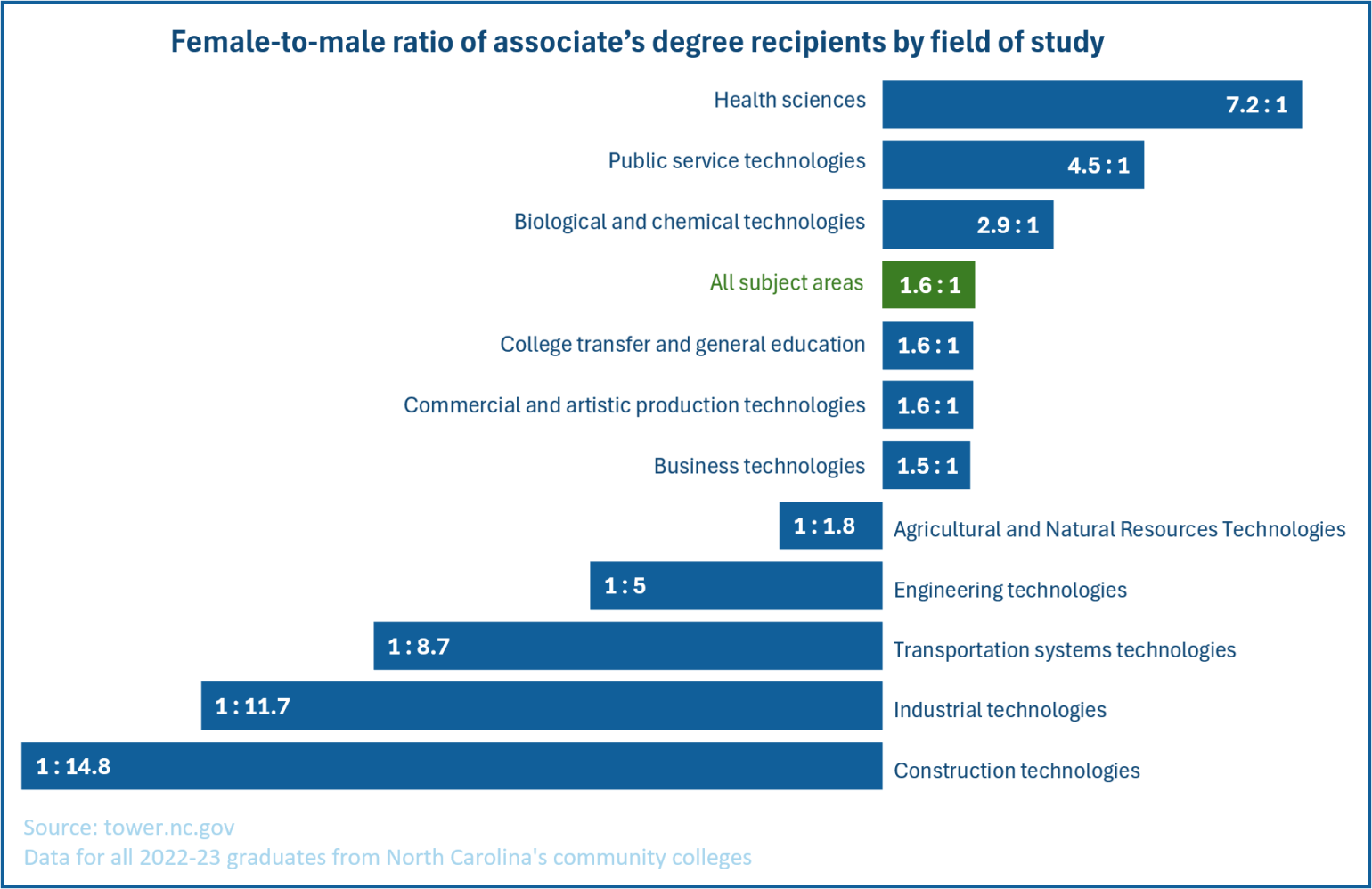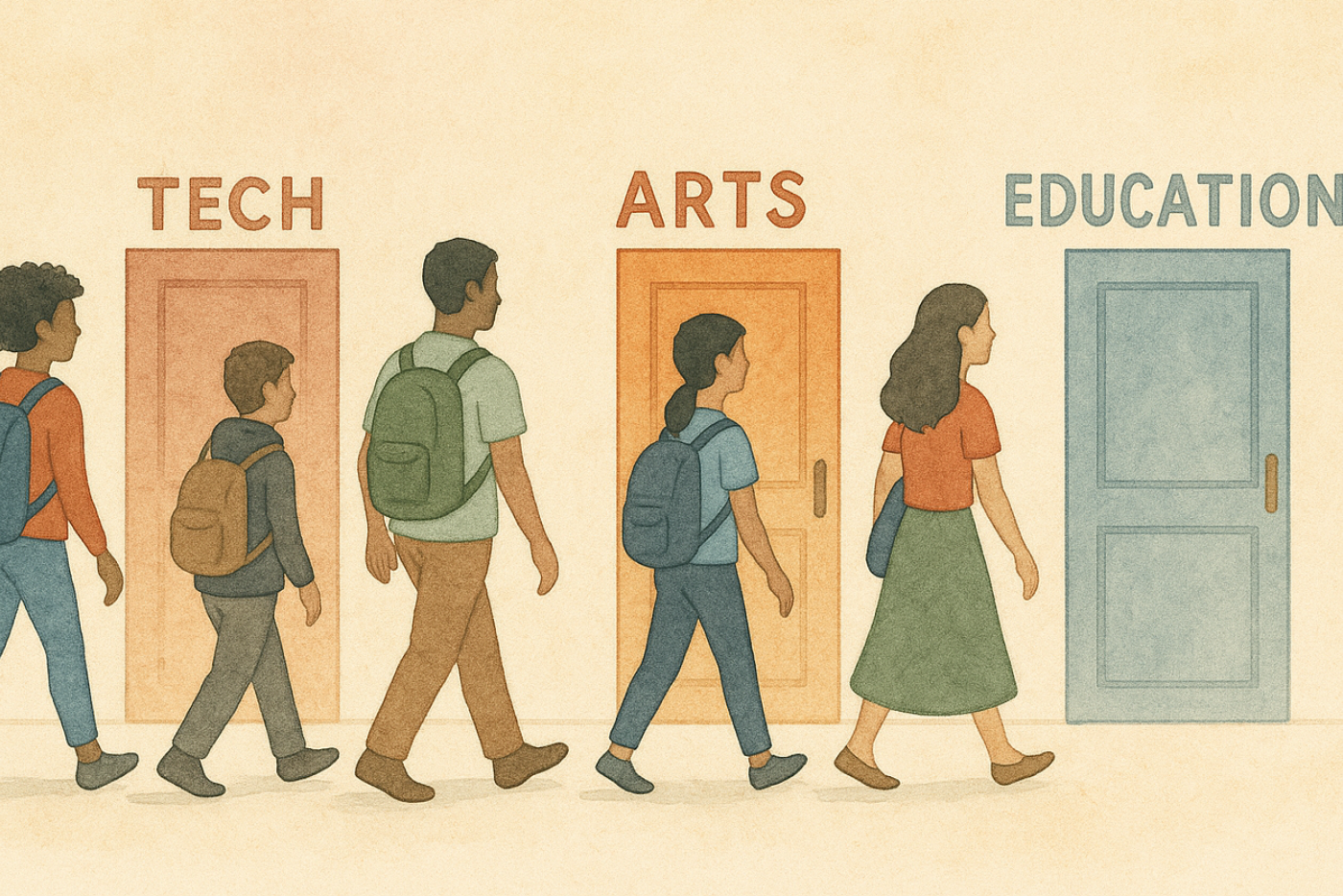Author: Oleks Movchan
When it comes to choosing college majors, many students still follow paths that reflect traditional gender roles. Women gravitate toward Health professions and Education, while men crowd into Engineering and Computer science. This isn’t just a fun fact for campus tour guides, but a pattern with real economic implications. Picture this: about 80% of education and health majors are women, while engineering classrooms are filled with 80% men.
So why does this matter? Because the kind of degree someone earns can play a big role in their long-term earnings. Fields like engineering and tech typically offer higher starting salaries and better financial growth over time. On the other hand, jobs in education and health, while incredibly important, often pay less and offer slower wage growth. It’s not that women aren’t drawn to high-paying careers. Factors like early experiences, cultural expectations, and structural barriers can all influence what fields students end up in. The result? Earnings inequality that starts long before the first job interview.
The following charts uses data from NC TOWER to show the gender composition of the most popular bachelor’s and associate’s degree majors, prompting a reflection on how we discuss majors, career paths, and gender roles from an early age.


More data and insights are available on NC TOWER.

